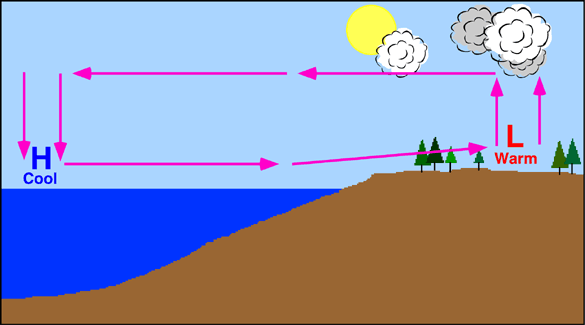Ninety percent of the country's wine grapes are grown in California.
Why is that? At the inexpensive end are grapes coming from the food basket of the Central Valley. Most people don't realize that nearly three-fourths of the state's wine grapes are grown here. Premium wine grapes are mostly from coastal areas though there are some regions of the inland Sierra Foothills producing excellent wines. Napa and Sonoma Counties each produce only about 4% of the state's wines.We'll focus on the coastal regions since that's where most of California's premium wine grapes are grown.
The two "main ingredients" for producing excellent wines are a cooling influence in the climate during the growing season and well-drained soil.
California's Coastal Climate
Coastal California has a Mediterranean climate of wet, cool winters and warm, dry summers. So far, so good, because you need sun and warmth during the growing season. Long periods of clouds, humidity, and rain are all bad, and California generally has none of this while the fruit is growing. Too much heat and the vines shut down to preserve water. Frost at the wrong time can be a problem; freezing can be disastrous. Coastal California rarely has a serious frost problem and doesn't have freezing issues.
Coastal temperatures will run from the 70s to the 80s to even the 90s during the summer, but the common event is cooler air coming in overnight and into the mornings often with a marine layer of low clouds that burn off before noon. It's not unheard of to see low 90s in the afternoon and low 50s before dawn the next morning. This really confuses the out-of-state visitor as they didn't pack for this!
The cool temps allows the grapes to stop production and rest. This maintains the correct acid/sugar balance needed for fine wine. The best wines from anywhere in the world come from locations with a cooling influence during the growing season. Wines from places without the cool nights do not have the acids of cooler climate wines.
Coastal California has the chilly water of the Pacific generating cool breezes late in the day as the interior of the state heats up.
 |
| Sea breezes at the California coast are generated by rising hot air inland drawing in heavier, cooler air Image from weathergamut.com |
Soil
Grapes can grow in many kids of soils. Interestingly, using the best farm soil for grapes isn't a great idea. Grape vine growth is very vigorous. A poorer soil will actually help slow down the vine growth to manageable levels and leave more energy to go into the all-important fruit.
A well-drained soil is essential as the roots need oxygen from the spaces in the soil to survive. So a fairly deep, but well-drained soil without a lot of nitrogen seems best. Soil that is too shallow stunts vine growth plus they becomes too dependent on surface watering.
Most of coastal California does not have great farm soil though there are a few pockets that grow fruits and vegetables. There are many soil types used successfully for grape growing.
No comments:
Post a Comment